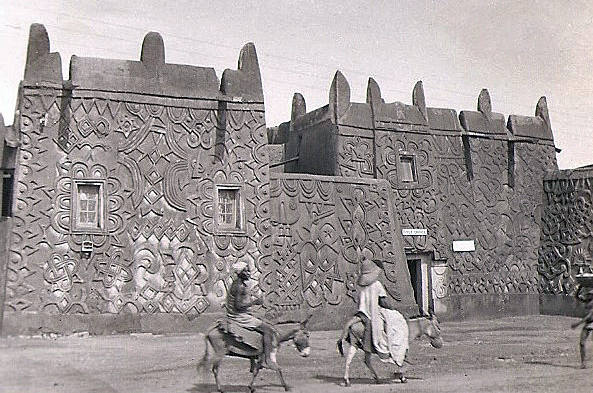Many years ago, before the advent of colonization, the ancient city of Kano was loaded with activities during the Fulani empire of 1804, when Kano at the time was a prosperous city. The state was surrounded by a brown-mud wall standing 3.5-metres high and 1.5-metres thick, to safeguard it from external forces and to protect it from invasion.
All entrance and exit to the city, which at the time was home to an estimated 50,000 people, were through one of 13 enormous gates guarded by security personnel. Thus, the fortification had a 24 km2 footprint. The city, which had rich iron reserves and plenty of water, served as a centre for Islamic learning and a prosperous commercial centre.
History has it that the enormous wall kept the people inside safe, yet those were the days. Today, things are completely different. The more than 1,000-year-old barricade has large sections that are either destroyed or in poor condition.
In this piece, I will be narrating the history of the Kano city walls and the structure of the walls.

History
The magnificent Kano city walls were constructed between 1095 and 1135 AD, during the rule of King Kijimazu. They were constructed to block the entrance to Kano from invaders and the forces of empires looking for vassal kingdoms to grow and raise their royalties.
The Federal Government proclaimed the walls and gates a national monument in 1959 after earlier placing them under the care of the Emir. Now, it is up to the government to keep them safe, secure, protected, and preserved.
Meanwhile, Sir Frederick Lugard, the Protectorate of Northern Nigeria’s High Commissioner, noted that it was incredible and beyond reasonable doubt to see a structure like that anywhere in Africa, as it was way ahead of what was imagined by their fellow officers in Europe.
Lugard further described the magnificent structure as being 11 or 12 miles long, 40 feet wide at the base, and rising to a height of 30 to 50 feet. Thus, the 4-foot-thick loop-holed crest of the wall, which was pierced by 13 gates and further fortified by a deep ditch, was backed by a wide rampart walk.

Moreover, at the time, the gatekeeper known as Sarkin Kofar was assigned to each gate, and residences were still provided for him and his family inside the gates or close by. Therefore, the gates were built at precise locations along the walls.
Between 1095 and 1135, the first city gate, known as Kofar Kansakali, was constructed. As of right now, Kano has 15 city gates: Kofar Nasarawa, Sabuwar Kofa, Kofar Dan Agundi, Kofar Naisa, Kofar Gadankaya, Kofar Fomfa, Kofar Dukawiya, Kofar Kabuga, Kofar Kansakali, Kofar Waika, Kofar Ruwa, Kofar Dawanau, Kofar Wambai, Kofar Mazuga, and Kofar Mata. After the British invasion of Kano in 1903, Sabuwar Kofa was constructed.
The Kofar Fomfa city gate, which was constructed in the early ’90s under the rule of King Abdullahi, the late Emir Ado Bayero’s father, is the other relatively recent city gate.
According to the people of Kano, the walls are their heritage; when people think of Kano, they think of the walls. Thus, it is often referred to as their symbol.

Present-Day Kano City Walls
The Kano City Walls were hailed as “the most impressive landmark in West Africa” in 1903, but despite several requests to the relevant authorities over the past century, the walls have been allowed to deteriorate and have even been covered over by the wealthy. The better-preserved walls next to the Kwiambana gate have vanished behind brand-new residences and businesses in recent years.
The walls had protected the city from invasion and attack for about a thousand years, but they are now almost completely gone as a result of human encroachment, collapse, and natural factors. Thus, the mud walls are either gone or crumbling.
Kano presently has a population of roughly 3.6 million after growing dramatically since its inception. Therefore, there are now homes and businesses where the walls were dismantled. Other places have been transformed into landfills.

However, research reveals that despite the ignorance of the people on the proper management of the walls, some people who are referred to as the wall-restoration campaigners have continued to react to the need to restore the structures as well as to sustain the dignity of Kano State for generations to come.
As a result of these campaigns, efforts to salvage and restore what is left of the ancient wall have been launched, and at least about 13 gates have been painted and repaired.





